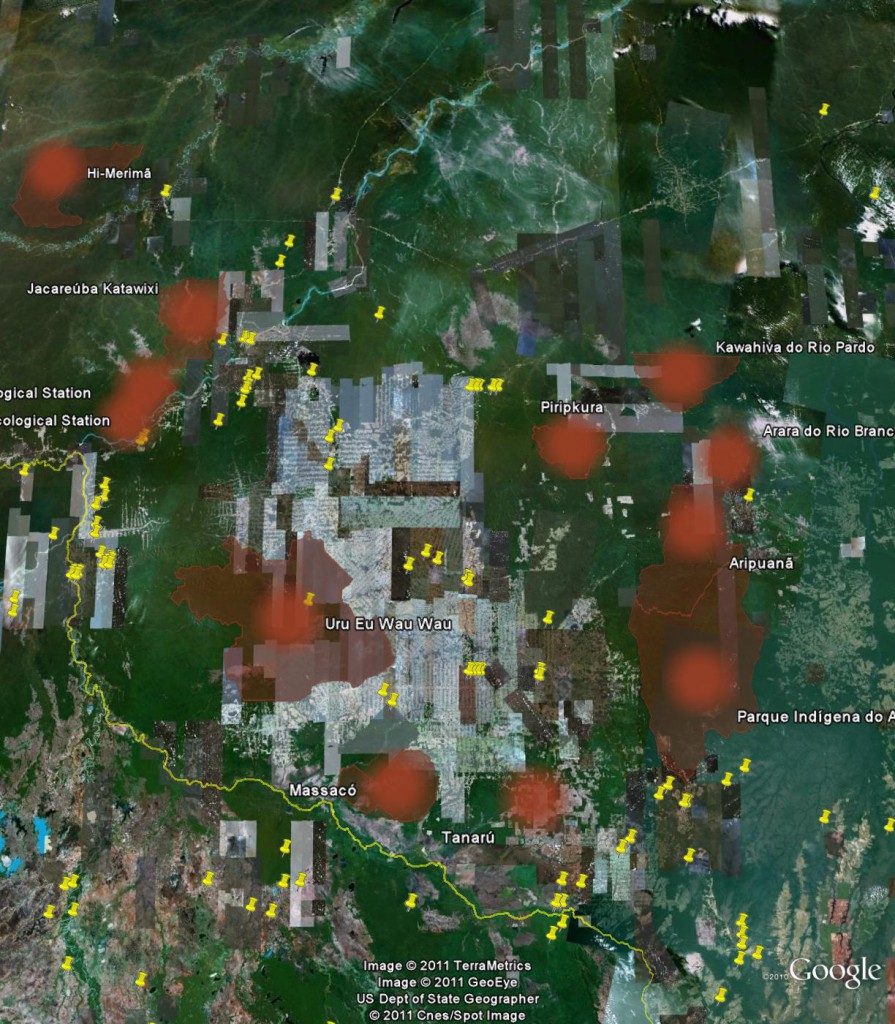Survival International has a new website on Uncontacted Tribes:
More than 100 tribes around the world reject contact with outsiders. This is their story.
Somewhat weirdly, the website includes a map, although it is pointed out that it “won’t help anyone make ‘first contact.’ But it will help to stop oil companies and loggers from invading the lands of uncontacted tribes.”
Be that as it may, I could not resist mashing it up in Google Earth 1 with the data in Genesys on the world’s holdings of agrobiodiversity. This is the result for an area comprising the Brazilian state of Rondonia and some surrounding regions.
Not surprisingly, there’s not much in the way of germplasm accessions from the general areas occupied by uncontacted tribes. Oil and logging companies may not be the only things that these tribes should be worried about.
